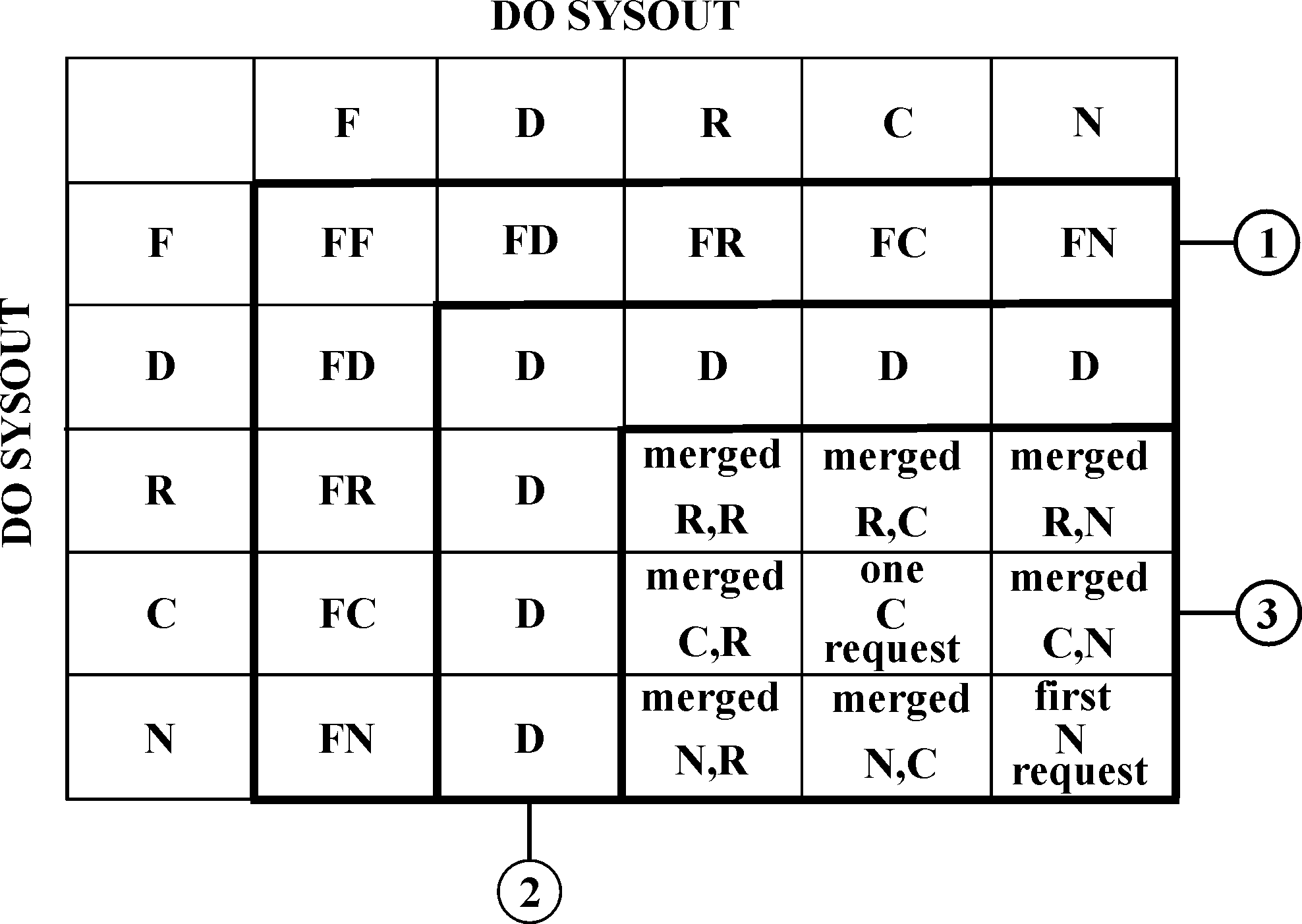Control-M performs all copy to file operations (option F) first.
After performing all copy to file operations, Control-M merges all operations performed on a specific FROM class.
After merging operations on specific FROM classes, Control-M merges the operations performed on the SYSOUT as a whole (where the FRM subparameter is set to blank).
Control-M then passes the merged sets of instructions to JES for processing.
The resulting combination of operations can vary depending on whether the operation that was merged with a DO SYSOUT operation is a SYSOUT operation or another DO SYSOUT operation.
Generally, DO SYSOUT operations override, or are performed along with, SYSOUT statements.
The following chart and the accompanying numbered explanations indicate the result of merging multiple DO SYSOUT statements. Note the following points about the chart:
Figure 214 Effect of Merging Multiple SYSOUT Statements

The order of precedence in which Control-M processes and merges operations is as follows:
Copy to file operations are performed first (directly by Control-M) for DO SYSOUT statements, regardless of whether FROM class is specified. Other operations are then performed.
This operation supersedes all other DO SYSOUT operations (except copy to file operations described above). Superseded operations are ignored, that is, they are not performed.
In general, combinations of R, C, and N requests are merged, that is, they are all performed. The exceptional cases indicated in the chart are described below:
Parent Topic |